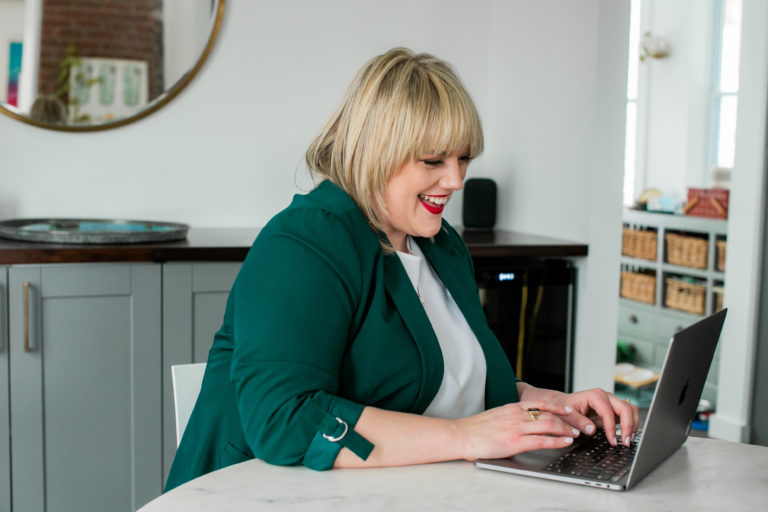How to Finalize a Proposal With Your B2B Clients And Get the Yes
Posted on April 28th, 2023 to Uncategorized
Thinking about how to finalize a proposal with your B2B clients and getting the deal over the finish line can be a source of significant stress and frustration.
Your proposal is the culmination of all the work you did to discover what the client needs, and once you hit “send,” the decision lies with them — so it only makes sense to feel anxious and insecure as you wait for the moment that determines whether all your efforts and hard work will pay off.
However, the process of finalizing a proposal is often overlooked, leading to rushed and ineffective proposals that fail to convince clients.
This is where the fingerprints meeting comes in.
The fingerprints meeting is a crucial step in the sales process that involves collaborating with clients to finalize the proposal before sending it to them — in other words, getting their “fingerprints” on it
In this post, we’ll discuss the importance of finalizing a proposal before sending it to clients and how the fingerprints meeting can help you achieve that.
We’ll dive into the specifics of what a fingerprints meeting entails, how to lead one, and the benefits for you and your client.
By the end of this post, you’ll understand why a fingerprints meeting is an essential part of the proposal process and how it can help you win more deals.
But first, let’s discuss why a single sales conversation is insufficient.
Why a Sales Conversation is Not Enough to Finalize a Proposal
Let’s set the stage: you score a discovery call with a client you really want to work with.
You research, ask intelligent questions (hopefully between 11-15*), and start writing a proposal.
Maybe you even schedule a second call or send an email to get answers to any questions that come up as you finalize the proposal.
You send it and wait with bated breath for the response. Then, nothing.
Here’s the rub.
Many founders, small business owners and subject matter experts assume that one or two conversations are enough to get all the information they need to get the go-ahead on their proposal.
The problem with this approach?
It leaves you in the dark about what it really takes to get the yes internally, including the tensions you must overcome.
After all, the client may be talking to other providers or have difficulty deciding.
Other decision-makers may be involved with their own needs and pain points you’re unaware of.
This is where the fingerprints meeting comes in.
The fingerprints meeting is a chance to solidify your conversations with the client and turn them into actionable steps.
Let’s get into how to a fingerprints meeting works and helps you finalize your proposal with your clients.
What Happens During a Fingerprints Meeting
The fingerprints meeting is hands-down one of the biggest game-changers I impart to founders selling high-ticket services B2B with complex sales processes.
The term “fingerprints” refers to the idea that the proposal should have the client’s fingerprints all over it, indicating their active involvement in the proposal creation.
Now that you understand the importance of the fingerprints meeting in the proposal process, let’s dive deeper into what happens during the meeting.
The fingerprints meeting consists of four key elements:
- Recap of what you heard during Discovery
- Walk the client through the proposal or an outline
- Get the client’s fingerprints on the proposal
- Understand the buying process and mapping out a timeline
Firstly, the meeting starts with a recap of what you heard during Discovery.
You’ll review the notes and insights you gathered during previous conversations with the client and check if you understood their needs and expectations.
It’s essential to ensure that you and the client are on the same page before moving forward with the proposal.
Next, you’ll walk the client through the proposal or an outline. This involves presenting the proposal to the client and discussing the details, such as the scope of work, budget, and how the project will be delivered.
This is an opportunity to get feedback from the client and make any necessary adjustments to the proposal.
After discussing the proposal, you enlist the client’s “fingerprints,” meaning the client actively participates in the proposal creation process, providing feedback and input to ensure that the proposal meets their needs and expectations.
By doing so, the client becomes more invested in the proposal and is more likely to choose your services over your competitors.
Finally, you conclude the meeting by defining their buying process and mapping out a timeline. Discuss the next steps and establish a clear timeline for the buying process.
By doing so, you can reduce the risk of getting ghosted by the client and ensure you know how and when to follow up.
Now let’s get into the measurable benefits of hosting this meeting.
Benefits of a Fingerprints Meeting to Finalize A Proposal
Adding another meeting to the sales process may give you pause. If you’re having any of these thoughts…
Am I imposing on their very busy schedule by asking for another meeting?
Will they think I don’t know what I’m doing and need direction?
What if they just go with someone else who submits a proposal quicker and cheaper?
Stop right now! I’ve never had a founder tell me that a potential client has refused a meeting.
On the contrary, they’re relieved because you are taking control of the process and providing them with an action plan and a timeline.
But those are just two benefits of adding a fingerprints meeting; let’s get into the others.
1. The fingerprints meeting provides an opportunity to uncover new information and opportunities.
By reviewing what you heard during Discovery and checking with the client to ensure that you understand their needs and expectations, you can uncover new information that can help improve the proposal or identify additional opportunities for your services.
This will help you provide a more customized and effective solution to the client’s needs, increasing the likelihood of winning the business.
2. The fingerprints meeting is an opportunity to build trust and rapport with the client.
By involving the client in the proposal creation process and getting their input on various aspects, you demonstrate your understanding of their needs and your ability to deliver on your promises.
This will help build trust and rapport with the client, making it more likely that they will choose your services over your competitors.
3. The fingerprints meeting helps you know how and when to follow up with the client.
By understanding the buying process and mapping out a timeline, you can reduce the risk of getting ghosted by the client and ensure you know how and when to follow up with them.
Armed with this information and initial client buy-in, you’re in a much better position to submit a comprehensive, compelling proposal tailored to their needs.
You’ll also proactively overcome any tensions your direct client may face getting the proposal approved and executed.
Summing It Up – Finalize A Proposal and Seal the Deal
Getting the go-ahead on a proposal with B2B clients can be daunting, but it’s a critical step in the sales process that should not be overlooked.
A rushed or ineffective proposal can cost you the deal, so it’s important to take the time to collaborate with your clients and ensure that your proposal meets their needs and expectations.
The fingerprints meeting is a powerful tactic to help you achieve that.
By engaging in open and transparent communication with your clients, you can gather valuable feedback and insights that will enable you to refine your proposal and improve your chances of closing the deal.
So, if you’re looking to win more deals and improve your B2B sales process, try out the fingerprints meeting in your business practices and tell me what you think!
I shared this information in a recent Sales Roundtable, a monthly live gathering with me and other founders and subject-matter experts, where I teach and answer questions specific to your business. Click here to register for the next one.
*Top sales performers ask between 11-14 questions per call. – American Association of Inside Sales Professionals






